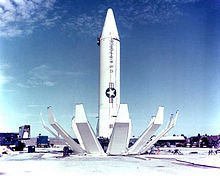
The 484th Air Expeditionary Wing is a provisional United States Air Force unit assigned to Air Combat Command. It may be activated or inactivated at any time. It was activated and attached to United States Air Forces Central for the invasion of Iraq in 2003. It was headquartered at Prince Sultan Air Base, Saudi Arabia.
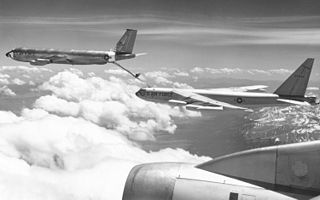
The 462d Air Expeditionary Group is a provisional unit of the United States Air Force. It is assigned to Air Mobility Command to activate or inactivate as needed to meet operational requirements. Its last assignment was at Naval Support Facility Diego Garcia, British Indian Ocean Territory.

The 494th Air Expeditionary Group is a provisional United States Air Force group assigned to Air Mobility Command (AMC) to activate or inactivate as needed. The group was activated in the events surrounding Operation Iraqi Freedom, the 2003 United States invasion of Iraq. Now-Lieutenant General Stayce D. Harris is listed by the USAF as commanding the 494th AEG at Moron Air Base, Spain, from July to October 2003. In addition, a patch published at USAF Patches.com implies that the group was active in Spain during "Iraqi Freedom."

The 6th Attack Squadron is an active United States Air Force unit, assigned to the 49th Wing at Holloman Air Force Base, New Mexico. The squadron is a formal training unit for crews learning to operate unmanned aerial vehicles.

The 92nd Air Refueling Squadron, officially 92d Air Refueling Squadron, is a squadron of the 92nd Air Refueling Wing's 92nd Operations Group, stationed at Fairchild Air Force Base, Washington. It was first activated shortly before the entry of the United States into World War II as the 2nd Reconnaissance Squadron. After training in the Douglas B-18 Bolo in the southeastern United States, the squadron moved to the Pacific Coast after the Japanese attack on Pearl Harbor and participated in antisubmarine patrols with the Consolidated B-24 Liberator. In April 1942, it was redesignated the 392nd Bombardment Squadron. Starting in mid-1942, it also began training crews on the Liberator. It ended these operations in July 1943 and began to prepare for overseas movement. After three months of training, the squadron moved to the Central Pacific, where it flew its first combat mission in November. The 392nd continued combat operations until March 1945, when it was withdrawn and moved to Hawaii, where it conducted routine training and patrol operations until it was inactivated in November 1945.

The 816th Strategic Aerospace Division is an inactive United States Air Force organization. Its last assignment was with Second Air Force at Altus Air Force Base, Oklahoma, where it was inactivated on 1 July 1965.

The 865th Technical Training Squadron is an inactive United States Air Force unit. Its last assignment was with the 1st Missile Division at Redstone Arsenal. Alabama, where it trained Italian Air Force personnel on the SM-78 Jupiter. It was inactivated on 1 November 1959.

The 866th Bombardment Squadron is an inactive United States Air Force unit. Its last assignment was as the 866th Technical Training Squadron with the 1st Missile Division at Redstone Arsenal, Alabama, where it trained for overseas deployment the SM-78 Jupiter. It was inactivated on 25 May 1962.

The 848th Strategic Missile Squadron is an inactive United States Air Force unit. It was last assigned to the 703d Strategic Missile Wing at Lowry Air Force Base, Colorado, where it was inactivated on 1 July 1961. The squadron was first activated in 1943 as the 848th Bombardment Squadron during World War II. After training in the United States, it deployed to the European Theater of Operations and participated in the strategic bombing campaign against Germany. Following V-E Day, the squadron returned to the United States, where it was inactivated in November 1945. It was activated as an intercontinental ballistic missile squadron in 1960.

The 725th Strategic Missile Squadron is an inactive United States Air Force unit. It was last assigned to the 451st Strategic Missile Wing at Lowry Air Force Base, Colorado, where it was inactivated on 25 June 1965.

The 724th Strategic Missile Squadron is an inactive United States Air Force unit. It was last assigned to the 451st Strategic Missile Wing at Lowry Air Force Base, Colorado, where it was inactivated on 25 June 1965.

The 718th Bombardment Squadron is an inactive United States Air Force unit. It was last assigned to the 4128th Strategic Wing at Amarillo Air Force Base, Texas, where it was inactivated on 1 February 1963.

The 717th Bombardment Squadron is an inactive United States Air Force unit. It was last assigned to the 4245th Strategic Wing at Sheppard Air Force Base, Texas, where it was inactivated on 1 February 1963.

The 716th Bombardment Squadron is an inactive United States Air Force unit. It was last assigned to the 449th Bombardment Wing at Kincheloe Air Force Base, Michigan, where it was inactivated on 30 September 1977.
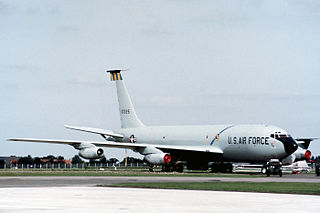
The 407th Air Refueling Squadron is an inactive United States Air Force unit. It was last assigned to the 42nd Bombardment Wing at Loring Air Force Base, Maine, where it was inactivated on 1 October 1990.

The 41st Expeditionary Air Refueling Squadron is a provisional United States Air Force unit. It was last assigned to the 380th Operations Group at Griffiss Air Force Base, New York, where it was inactivated on 15 February 1993.
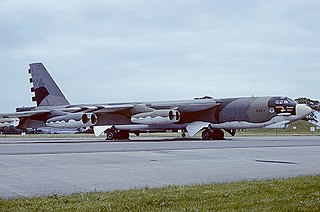
The 644th Bomb Squadron is an inactive United States Air Force unit. It was last assigned to the 410th Bombardment Wing at K. I. Sawyer Air Force Base, Michigan, where it was inactivated on 21 November 1994.

The 764th Bombardment Squadron is an inactive United States Air Force unit. It was last assigned to the 461st Bombardment Wing at Amarillo Air Force Base, Texas, where it was inactivated on 28 March 1968.
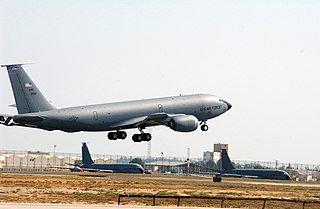
The 900th Expeditionary Air Refueling Squadron is a provisional United States Air Force unit. It was last known to be assigned to the 398th Air Expeditionary Group at Incirlik Air Base, Turkey.

The 902d Expeditionary Air Refueling Squadron is an inactive United States Air Force unit. It was last assigned to the 70th Bombardment Wing at Clinton-Sherman Air Force Base, Oklahoma, where it was inactivated on 31 December 1969.





